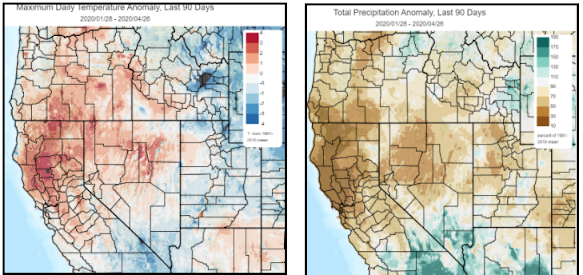Climate News - September 2020
Hope everyone has been doing as well as possible! For this newsletter, we will begin with the usual summary of regional climate features over the past few months. That will be followed by a look at abnormally warm ocean waters, also known as a “marine heat wave”, which have set up across the North Pacific. Finally, we’ll throw in a few words about climate averages from The National Centers for Environmental Information which are due to be updated by the middle of next year. Note: If you have any questions or would like clarification on what is presented in this newsletter, feel free to message us on Facebook ( https://www.facebook.com/NWSReno/ ) or email w-rev.webmaster@noaa.gov ________________________________________________________________________________ So, what’s been happening from a climatological perspective across northeast California, the Sierra, and western Nevada? Summer high temperatures ran considerably above average when compared with the averages from 1981-2010 (the la
